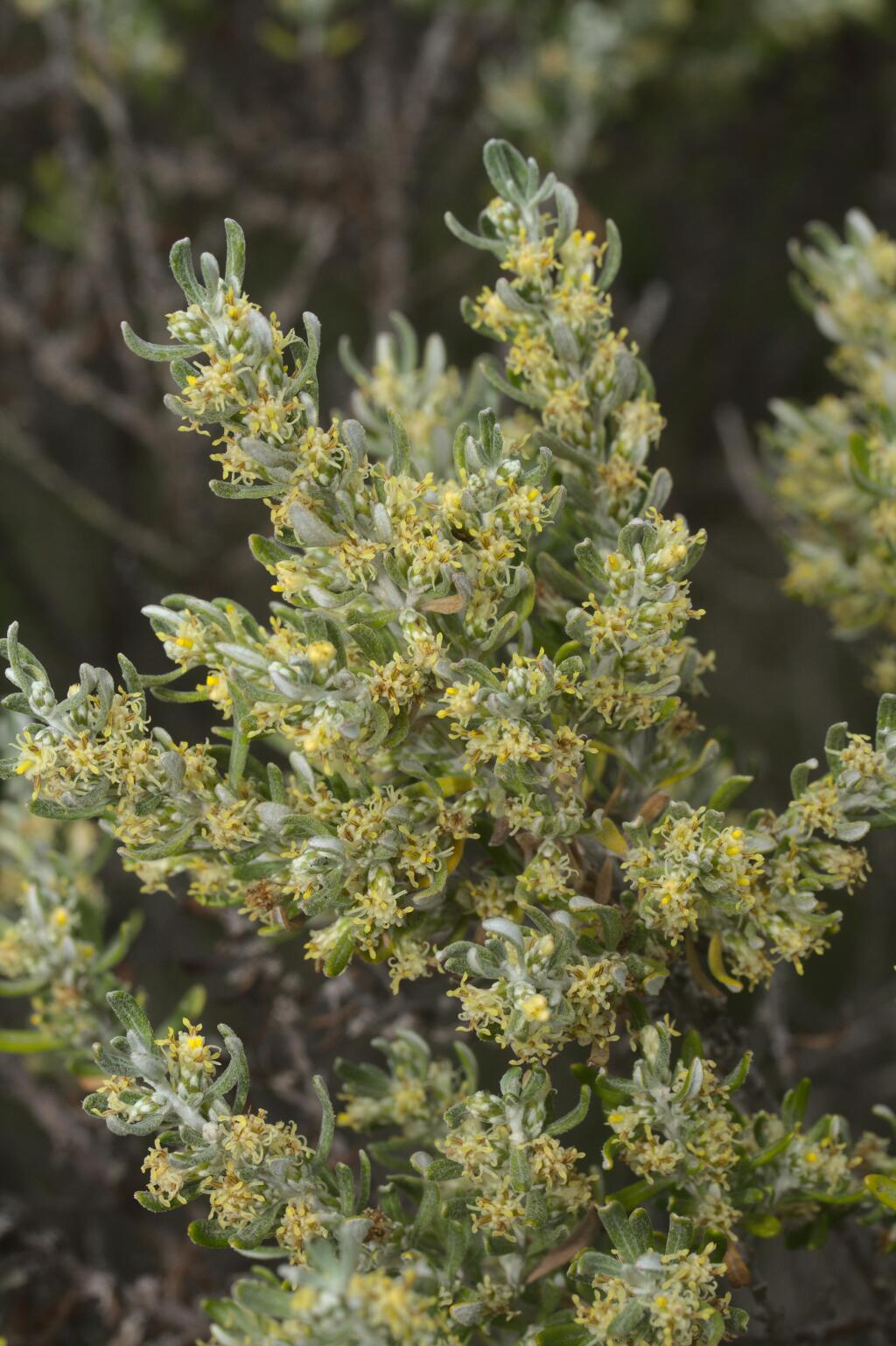Olearia axillaris
(DC.) Benth. Coast Daisy-bushBushy shrub to c. 2 m high; branchlets densely white-cottony, obscurely glandular. Leaves alternate, subsessile, linear to narrow-oblanceolate, (6–)10–25 mm long, 1–3 mm wide, upper surface green or grey-green, with cobwebby hairs or glabrous, lower surface densely white-cottony; margins recurved to revolute. Capitula sessile or subsessile, solitary in axils or terminating extremely short lateral branchlets, 5–10 mm diam.; involucre conical, 3.5–5 mm long; bracts 3–6-seriate, graduating, mostly glabrous but with a patch of cottony hairs near apex. Ray florets 3–6, white, ligules to 4 mm long, but sometimes not developed; disc florets 4–7, yellow. Cypsela narrowly obovoid, obscurely 6–9-ribbed, 1.5–3 mm long, sericeous; pappus bristles straw-coloured, c. 5 mm long. Flowers mostly Dec.–May.
GleP, Brid, VVP, GipP, OtP, WaP, EGL, WPro, OtR. Also WA, SA, NSW, Tas. Widespread and characteristic of coastal dunes and calcareous cliffs along much of the Victorian coastline.
Variable in the degree to which the leaves retain pubescence on the upper surface and in the development of the ligule in the ray florets. A distinctive form with crowded leaves under 1 cm long has been collected from shores of Port Phillip Bay near Melbourne, between Beaumaris and Black Rock.
Walsh, N.G.; Lander, N.S. (1999). Olearia. In: Walsh, N.G.; Entwisle, T.J., Flora of Victoria Vol. 4, Cornaceae to Asteraceae, pp. 886–912. Inkata Press, Melbourne.
 Spinning
Spinning


